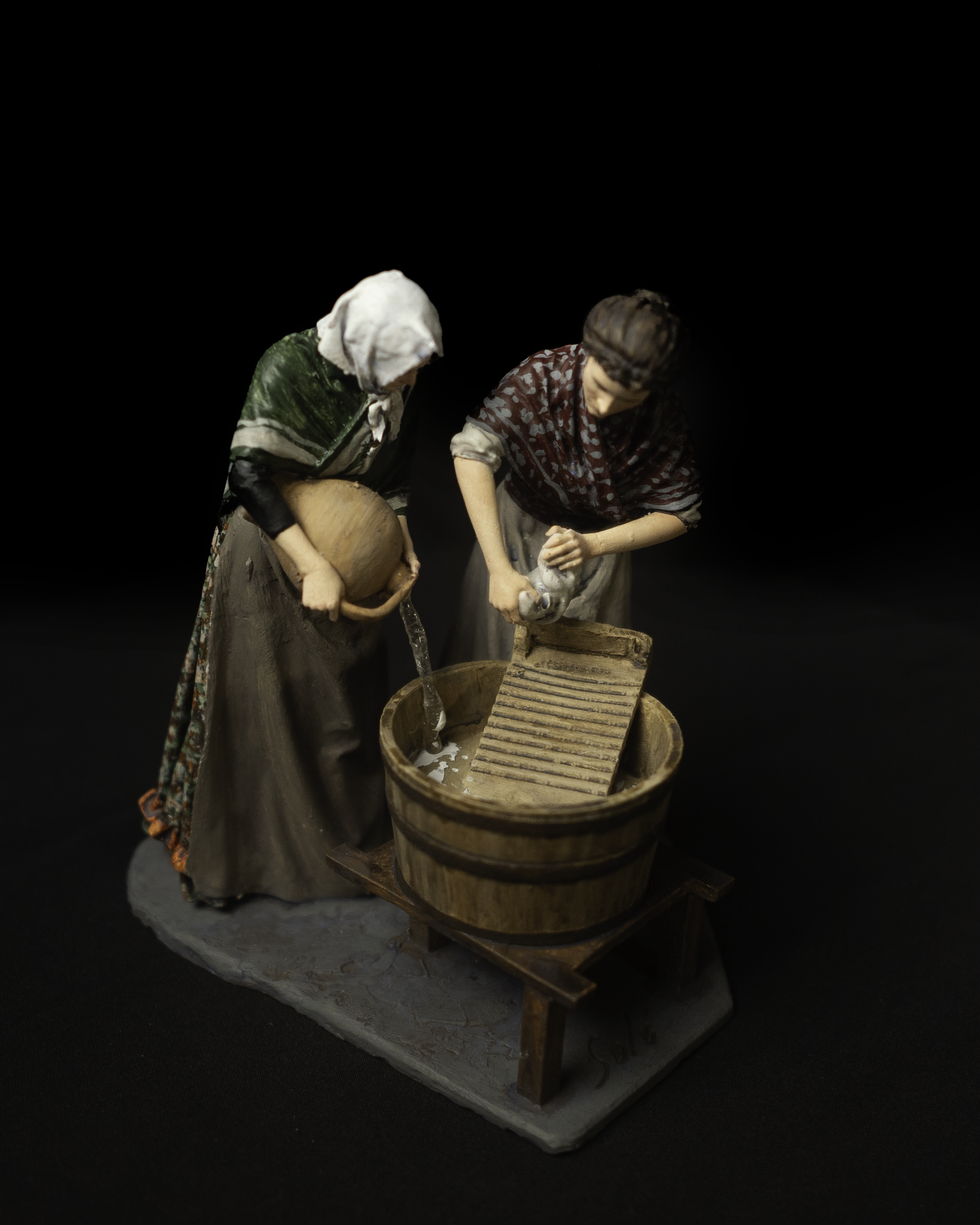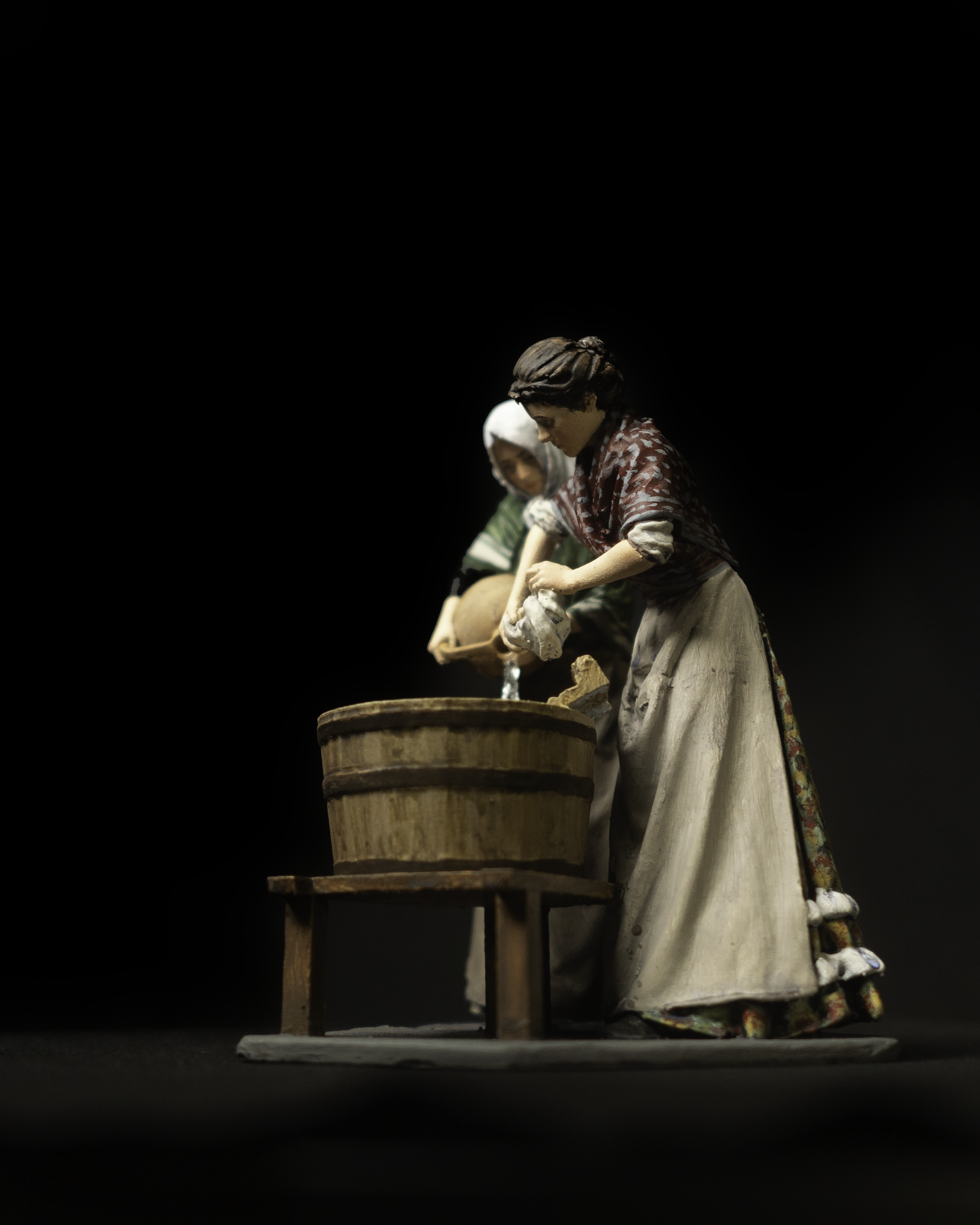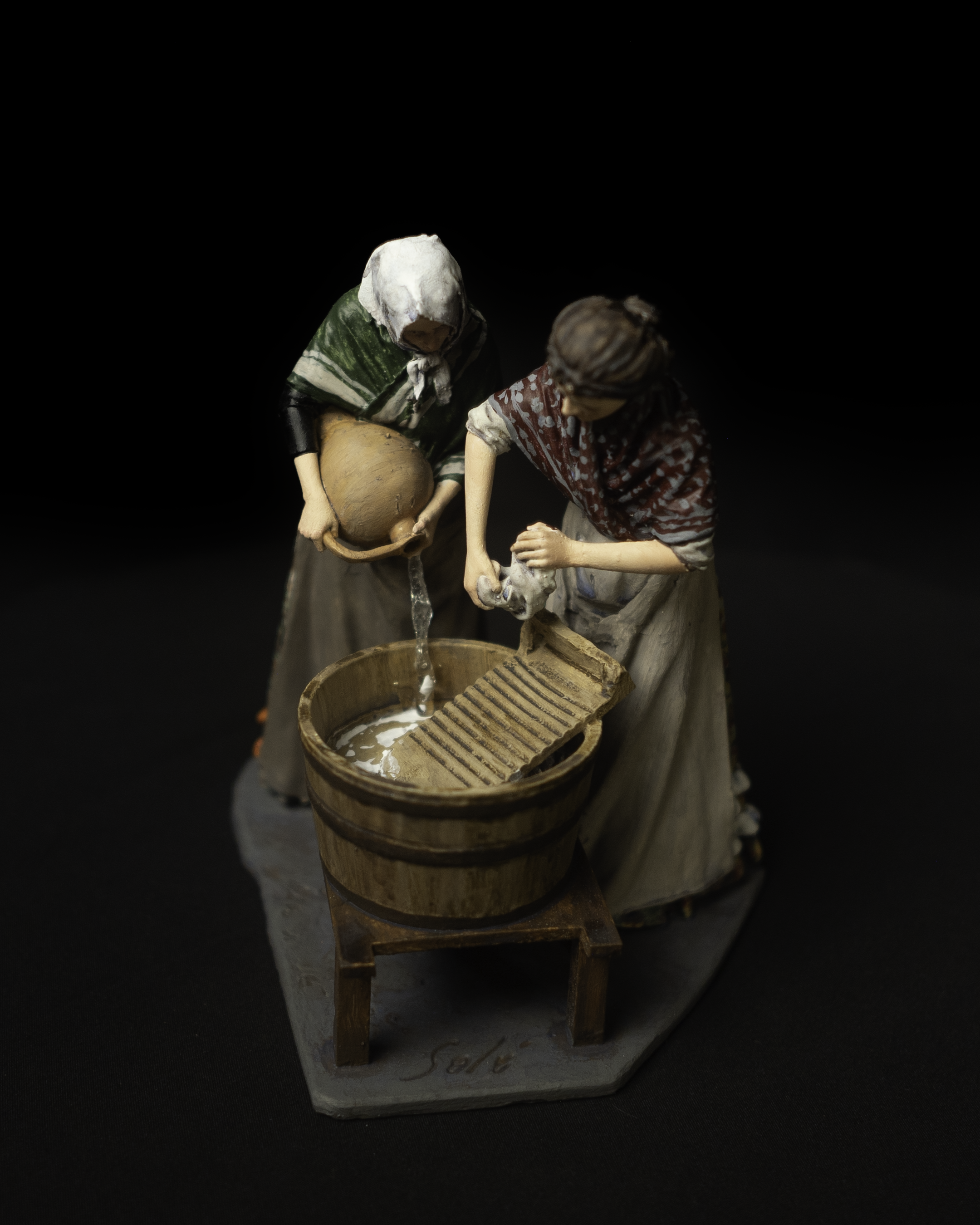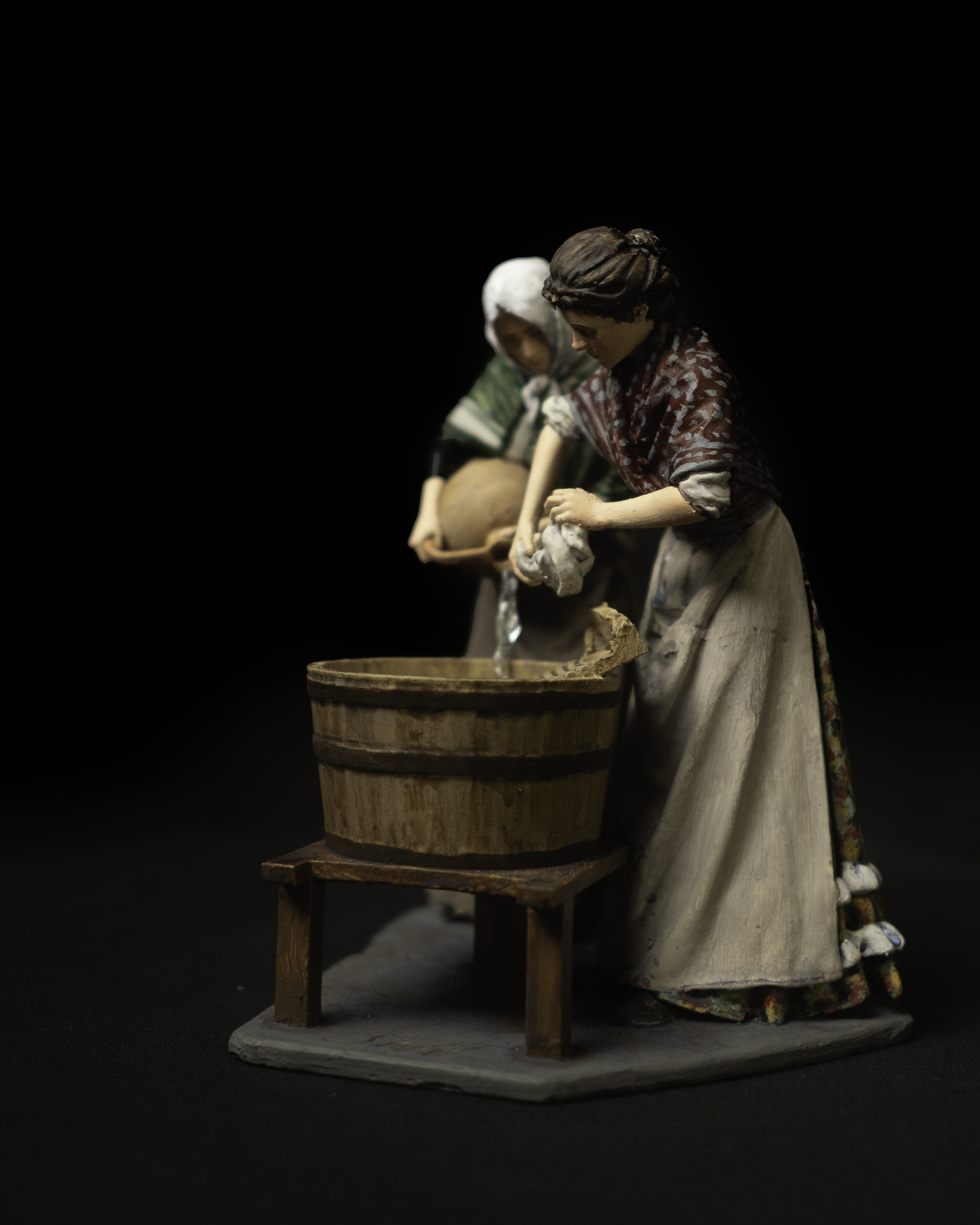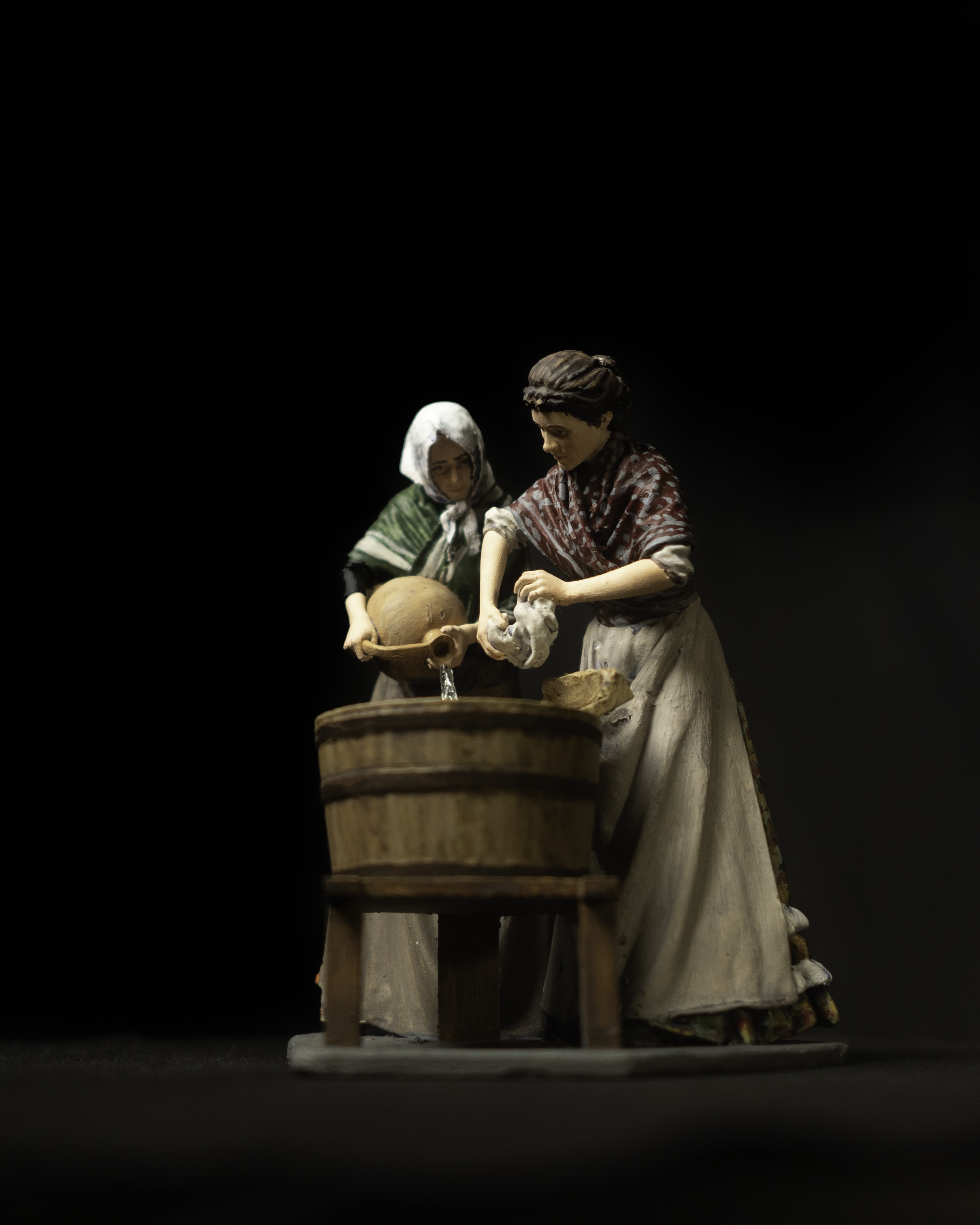The Water Woman
The Water Women of Madrid: Heroines of Water in a World Without Faucets
Imagine a Madrid where water didn’t magically flow from your faucet!
No, nativity scene enthusiast, before modernization, we had the "Aguadoras" (Water Women). Don’t know who they were? Well, they were the everyday heroines, bringing fresh water all over the city, a task that may now seem like something out of a historical movie, but was as real as the dust that covered the unpaved streets.
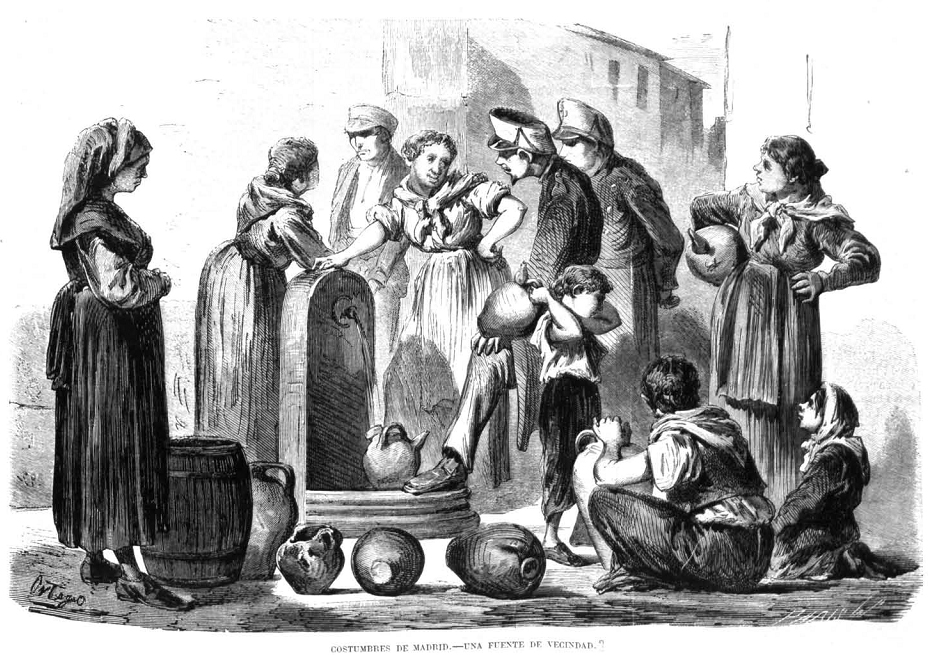
What Did the Water Women Do?
These women didn’t just carry jugs and pitchers, they were the true saviors of dry throats. In a city where heat and dryness were ever-present, hearing a "Water Woman" shout WATEEER! was like hearing an angel announcing salvation. Their job wasn’t just a daily task but a vital function, especially during the dreaded droughts [1] [2].

Challenges? Absolutely!
Do you think their life was easy? Think again. The "Aguadoras" had to deal with dusty streets and conflict. Yes, conflict, because public fountains were a battleground regulated by the City Council to prevent fights between neighbors and water carriers. A true water war! Plus, in times of deceit, some sold supposedly pure water from the Lozoya River, tricking those desperate enough to believe anything to quench their thirst [3].
And What About Trickery?
Speaking of trickery, these women were not exempt from the tricks of the trade. Some water carriers would trick newcomers by telling them that the public fountain water was bad, just to sell them the "best" water, supposedly from the Lozoya River [4]. A classic Madrid trick!

Revolution and Modernization
But like every good story, the "Aguadoras" have an ending. With the arrival of running water in the mid-20th century, their trade began to fade away. Goodbye jugs, hello faucets! This transformation marked the end of a picturesque era, turning the "Aguadoras" into a memory of an old, dusty Madrid [5] [6].
Legacy and Memory
Even though we no longer see "Aguadoras" in our streets, their legacy lives on. In some places, like Santa Cruz de Tenerife, statues and monuments have been erected in their honor. In Madrid, their memory lives in history and popular culture, reminding us of a time when every drop of water had to be carried by hand [7].
So, next time you turn on the faucet, think of the "Aguadoras." They were much more than simple water carriers; they were the guardians of urban life, facing challenges and conflicts while keeping Madrid hydrated. Bravo to them!
The Nativity Water Woman: An Indispensable Companion to the Washerwoman
In the bustling, dusty Madrid of the past, where running water was a luxury and unpaved streets were the norm, essential figures for daily life emerged: the "Aguadoras." These brave women not only carried water throughout the city but were also the lifeblood for other vital trades, such as the washerwomen who washed their clothes at home or in communal courtyards.
A Dynamic Duo in the Nativity Scene
Imagine the scene at the Nativity: Baby Jesus, Mary, Joseph, and right next to them, a tireless washerwoman, dedicated to cleaning the newborn’s diapers. But where does the water she uses come from? Enter our Water Woman, a crucial figure who brings fresh water to the stable, ensuring that the washerwoman can perform her sacred task of cleaning the diapers. Disposable diapers, as you can imagine, did not exist yet.
Connection and Complement
The Water Woman is not just a secondary figure; she’s the indispensable companion to the washerwoman. While the washerwoman rolls up her sleeves with her cracked hands and washboard, the Water Woman stays close, with her jug always full and ready. This duo represents not only the daily routine but also the cooperation and solidarity of Madrid’s working women.
A Tribute to History
This Nativity Water Woman is a tribute to all the women who, through hard work and dedication, ensured their communities had access to something as essential as water. Her inclusion in the Nativity scene adds authenticity and humanity, reminding us that even in sacred times, everyday life carried on, and someone had to do the hard work.
Scene Details
In your Nativity scene, you’ll see the Water Woman holding a jug, ready to pour water into the washerwoman’s basin. Every detail, from the design of the jug to the posture of the Water Woman, is intended to reflect the reality of these working women. This figure not only completes the scene but also enriches it, showing the interdependence of traditional trades.
A Shared Story
When you observe this pair of figures, you’re not just seeing two women at work, but a shared story of effort and mutual support. The washerwoman and the Water Woman in the Nativity scene are more than just figures; they are symbols of the resilience and strength of Madrid’s women, who, through their daily work, built the history of your city.
A Unique Opportunity
This Water Woman figure, part of a limited series, is a unique addition to any Nativity scene, bringing not only beauty but also a profound historical connection. Don’t miss the chance to include in your collection a piece that celebrates the authenticity and legacy of Madrid.
Don’t miss the opportunity to add this cultural gem to your collection. Get your Water Woman figure now and bring home a piece of Galdosian Madrid history.
Limited Edition:
#/24
- This figure is made exclusively to order; I don’t keep stock.
- Each piece is personally crafted as an original work of art, so delivery times may vary due to different factors. Once you place your order, I’ll provide you with an exact delivery date.
- Every piece is one-of-a-kind: signed, numbered, and comes with a Certificate of Authenticity. It also includes Intellectual Property registration to guarantee its value and originality.
Reproduced with the highest quality UV resin. Then, each figure is carefully hand-painted by myself.
Rembrandt acrylic paint is a high-quality artist's paint that meets the strict requirements of today's artists.
This acrylic paint is made with a high concentration of premium pigments that offer the highest degrees of lightfastness. Over 100 years of lightfastness under museum conditions.
Lightfastness has been tested according to ASTM D4303 standard.
Complete Acquisition Value - All Inclusive
All-Inclusive
- ✔ VAT
- ✔ Packaging with wooden box.
- ✔ Shipping.
- ✔ Transport Insurance.
| Height Scale | Scale 1/X | Value |
|---|---|---|
| 11 | 1/16 | 125€ |
| 18 | 1/10 | 250€ |
If you're interested in another size or a figure made of terracotta or bronze, please contact me for more information. Also, if you have any questions about the creative process, I'm happy to share more details.
Warning! The values of the figures on the website are subject to change without notice due to their exclusivity and demand.
Order the figure of:
“The Water Woman”
Please note that this website is not an online store or a traditional art gallery. My collection of Madrid-style, castizo/Galdósian figures will be sold exclusively at the historic shop 'El Ángel,' which has over 150 years of experience in Sacred Art. To purchase one of these pieces, you can visit the 'El Ángel' shop in person or contact them through WhatsApp or their website. I'm also available if you have any questions and would be happy to help you learn more about the figures and how they're created.
C. de Esparteros, 3, Centro, 28012 Madrid
We invite you to visit the 'El Ángel' store to discover in person the exclusive collection of Madrilenian, traditional, and Galdosian-style figures. You’ll be able to appreciate each artistic detail up close and take home a unique piece full of history. Don’t miss the chance to see them in person!

